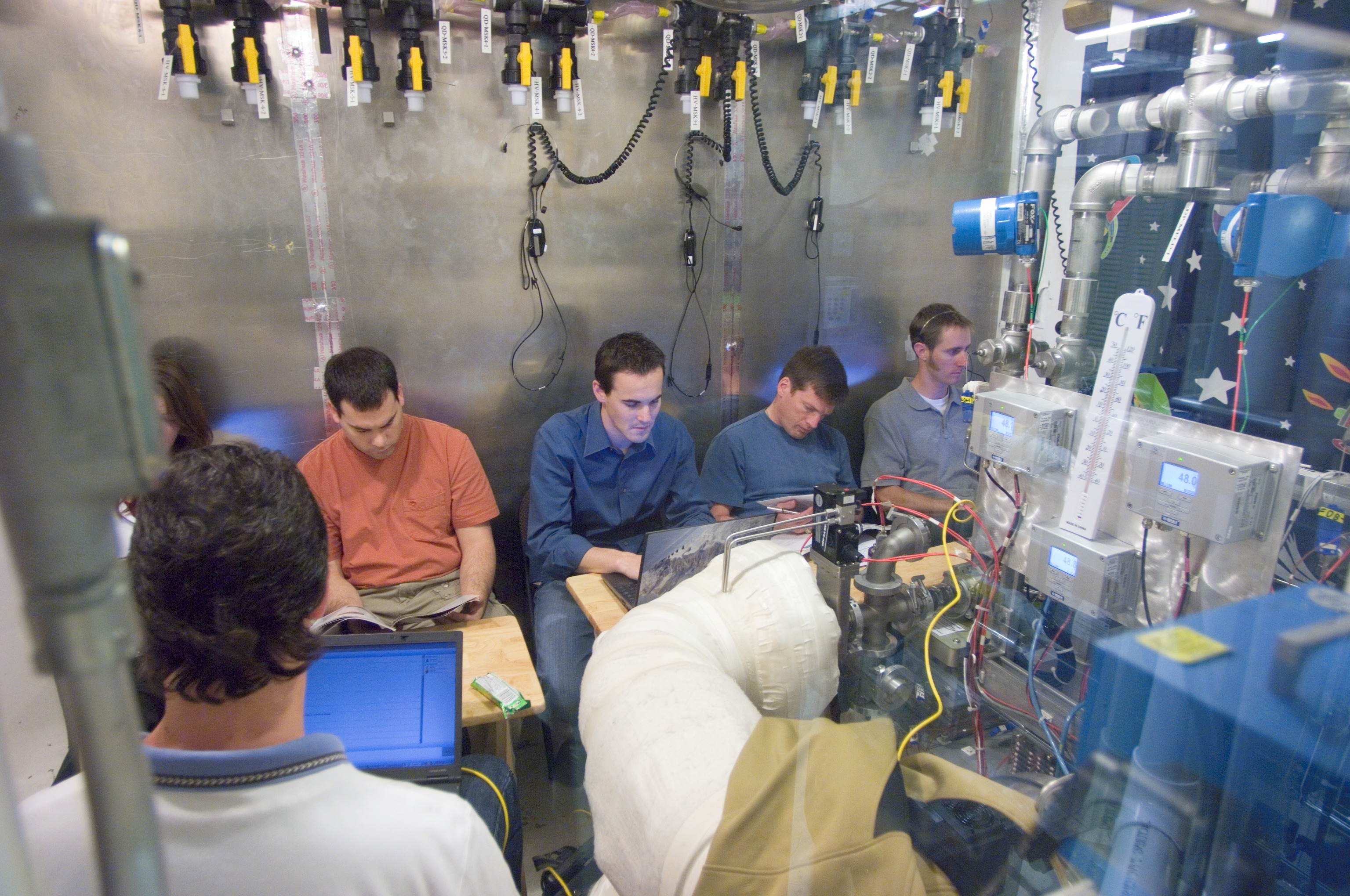For three weeks, 23 volunteers spent time helping NASA test a new life support system for the spacecraft that will replace the shuttle. Five volunteers at a time would squeeze into a special room the size of a walk-in closet for eight hours. Sweating and heavy breathing was encouraged, as scientists at Johnson Space Center wanted to measure the amount of moisture and carbon dioxide absorbed by a new system designed to control carbon dioxide and humidity inside a crew capsule in order to make air breathable and living space more comfortable. The tests took place from April 14 to May 1 of this year and are some of the first to use human subjects in support of NASA’s Orion crew capsule, Altair lunar lander and lunar rovers.
“We’re moving from paper studies to tests with hardware that will evolve and become part of the spacecraft that will fly back to the moon,” said test volunteer and NASA engineer Evan Thomas at Johnson.
Known as the Carbon-dioxide and Moisture Removal Amine Swing-bed, or CAMRAS, the new system will help sustain life on exploration vehicles and reduce the dependence on resupply from Earth.
“Our goal for CAMRAS is to develop a simple, regenerative, lightweight device that will work for both the Orion crew capsule and the Altair lunar lander,” said lead researcher Jeff Sweterlitsch.
The Exploration Life Support project also is developing technologies that will recover oxygen and water vapor, recycle spacecraft wastewater into drinking water and recover usable resources from wastes.
This series of tests put volunteers inside a test chamber scaled to be the size of the Orion crew capsule, about 570 cubic feet. The volunteers, who were selected and grouped to replicate a typical crew, were asked to sleep, eat and exercise during test sessions that lasted from a few hours to overnight.
“The air smelled a little artificial, like on a plane, and it was a little crowded,” said Aaron Hetherington, one of the volunteers and a director for the test. “But the air was fine; the temperature comfortable. My biggest observation is that it was unremarkable, which is good because that means the hardware was working.”
Two additional phases of testing on CAMRAS are planned.
Video of the tests are available on NASA TV
Original News Source: NASA Press Release


I would love to be a volunteer. Please let me know when you want volunteers. I would be honored to do anything with NASA.
Sounds similar to being stuck on a flight to a Spain with loads of football (soccer) yobs
All that B.O – luverly!!!!